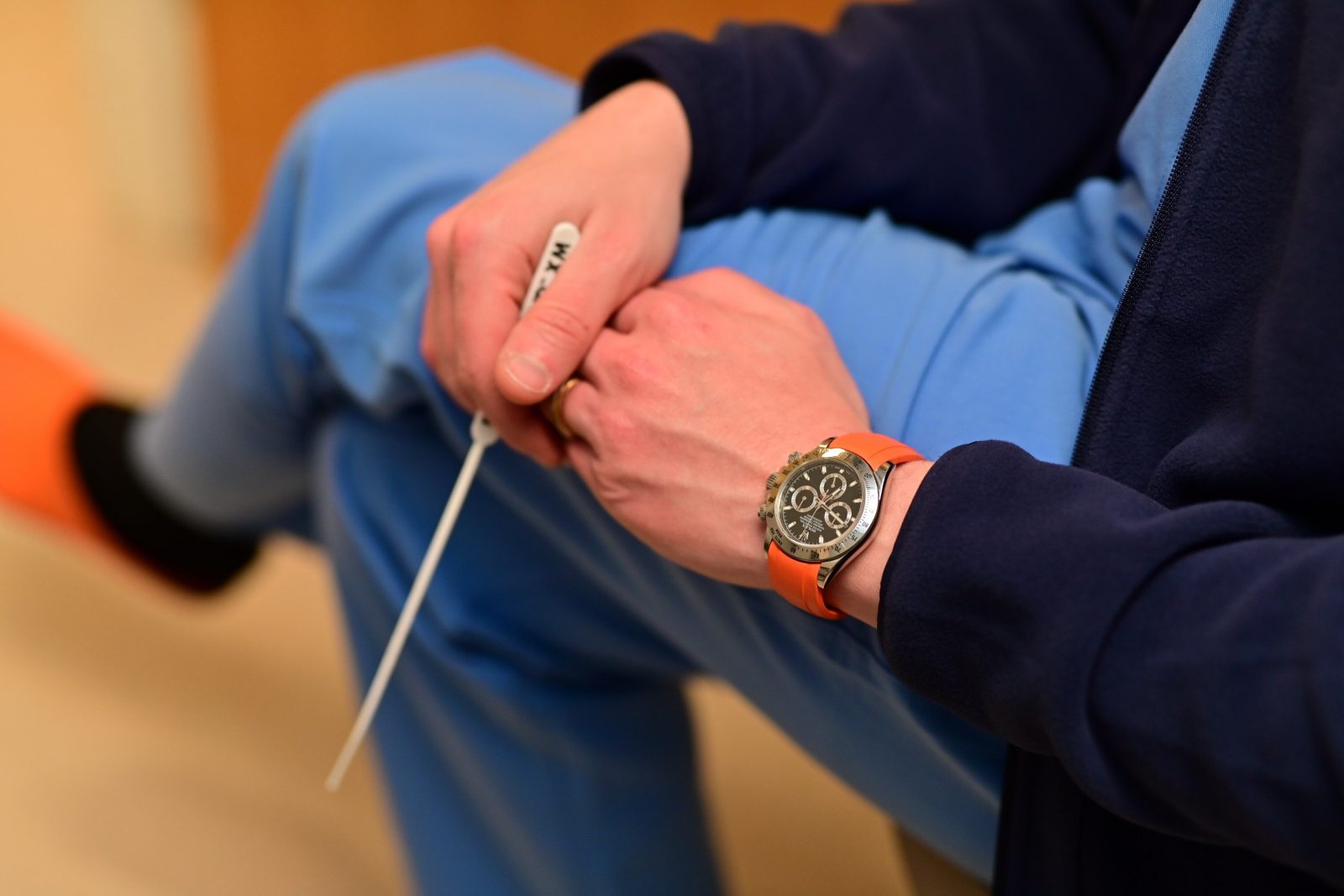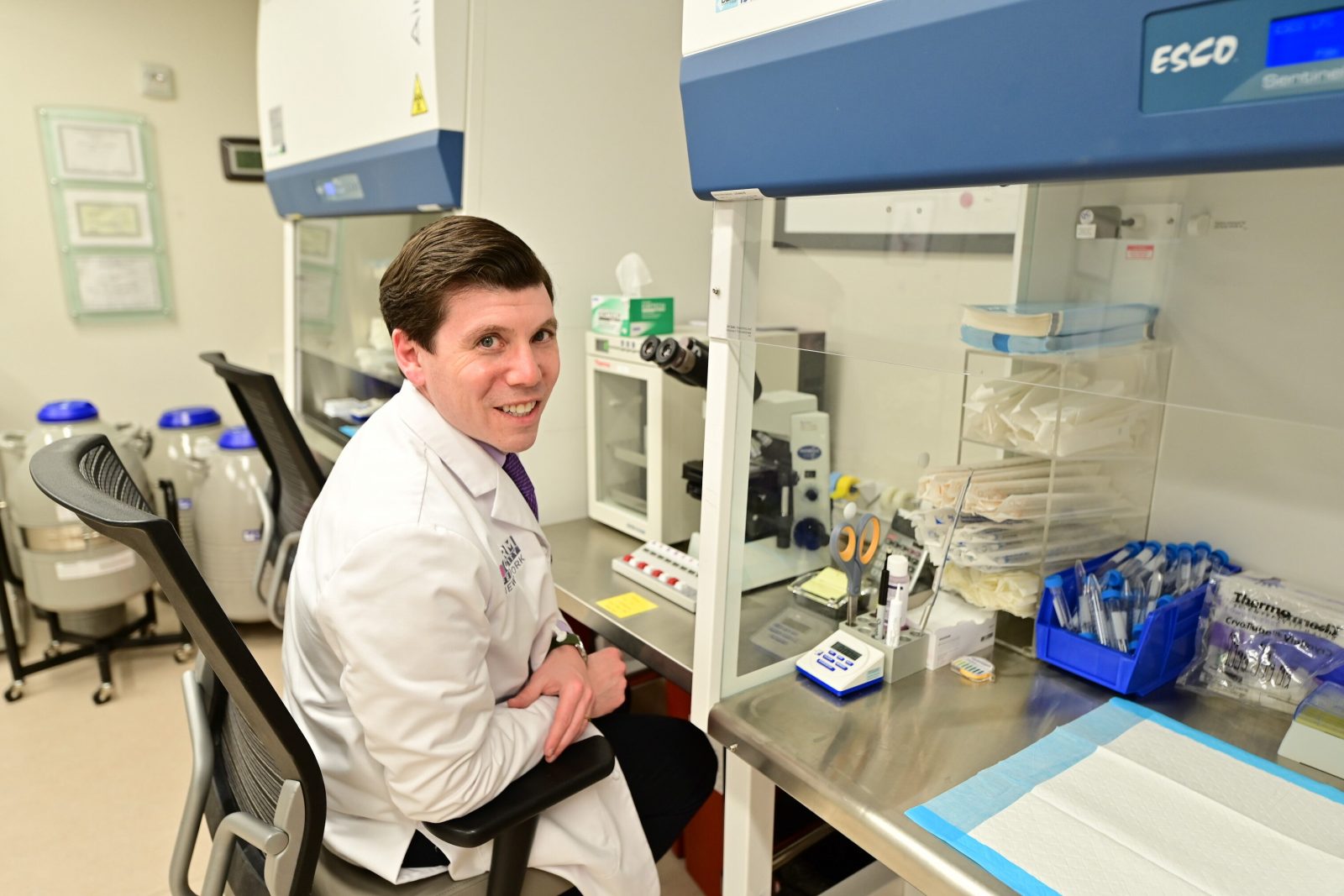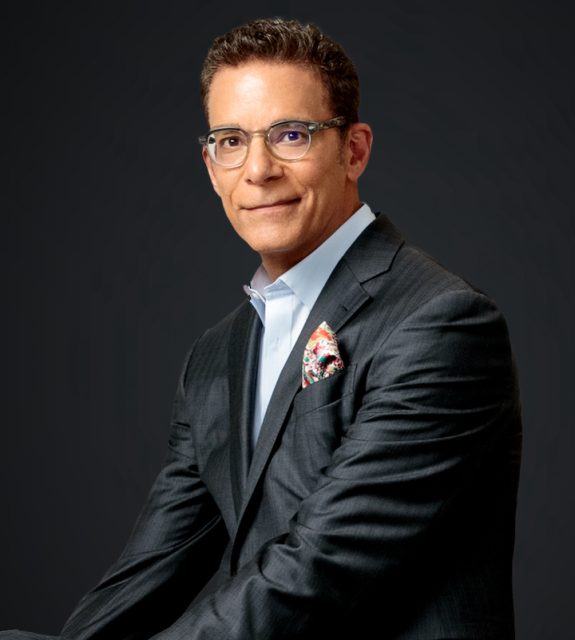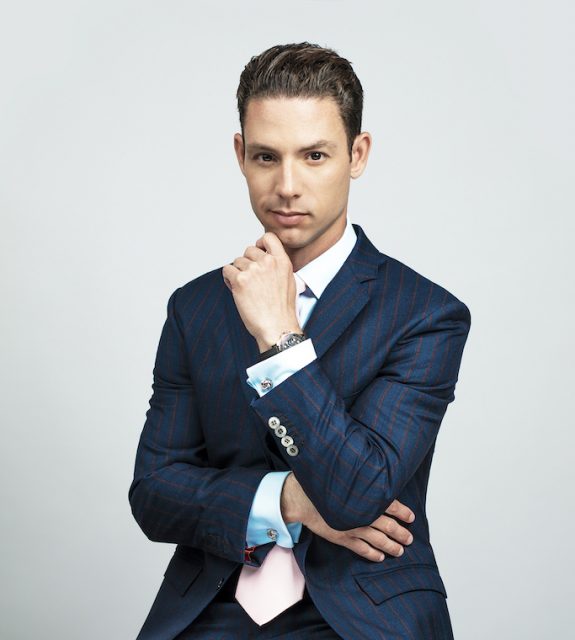Over the years, Dr. Brian Levine has been cited as one of the nation’s leading fertility experts in The New Yorker, New York Post, NBC, CNN, Avenue Magazine among others, offering valuable insight on everything from fertility misconceptions, egg-freezing 101, to how men can boost their fertility. Dr. Levine attended New York University School of Medicine, served as the President of the NYU Alumni Association, and was the only physician on NYU’s Board of Trustees during his 7-year tenure. Recently he was awarded the Meritorious Service Award, the highest award bestowed upon an alumnus for their extraordinary service and continuing devotion to NYU and who embodies the University motto: To Persevere and to Excel.
 Photo Credit: Eric Leung
Photo Credit: Eric Leung
Fertility and watches. Despite their seeming lack of association, they do possess similar characteristics. Fertility and watches are both marked by precise measurement. Watches are the way we mark time and in fertility, we measure someone’s fertility as a function of time because as one grows older, their fertility rates go down. Brian Levine, MD, leads the fertility industry by normalizing an open dialogue about infertility – a medical condition affecting 1 in 8 couples – and educates prospective parents on a national level. Haute Beauty sat down with Dr. Levine to discuss how his attention to detail in a patient’s diagnosis and treatment plan spreads beyond his profession, and to his love for horology and watches.
Haute Beauty: When did your love for watches first begin?
Dr. Brian Levine: At an early age. I will never forget, when I was nine years old and my parents gifted me a Swatch watch for my birthday. Back then, I remember thinking I was the absolute coolest kid because all my friends owned digital Casio watches and I had an analog. For me, telling time and being specific was a skill I was always passionate about since the beginning. Being able to look at a watch that told me the exact time always blew me away.
HB: What was the first watch you bought on your own?
BL: It was a Tag Heuer Professional 2000. I was drawn into Tag because Heuer was a racing company involved in Formula 1 racing. As an 18-year-old, that was elite precision sport. After working as a summer camp counselor, I saved up and bought it. To this very day, it still resides in my collection and holds a special place in my heart as it has traveled through college with me and was the first watch I bought on my own.
 Photo Credit: Eric Leung
Photo Credit: Eric Leung
HB: Tell us about your watch collection.
BL: My watch collection is an expression of who I am. I’ve never sold a watch; I have only acquired them over the years. Each watch that I have bought tells a story about me. I remember where I got it, why I got it, and what big milestone in my life it represents.
As a guy, jewelry options are limited. Watches are one of the few items you can change around on your day to day. It is my way of being a little bit different but still professional. Prior to buying a watch, I am research-heavy. I’m never impulsive and I always try to ensure I am not duplicating in the collection either.
HB: It’s interesting because watches tell the time but each watch tells a story and places time on that story. That being said, what is your funniest watch purchase story?
BL: It’s probably the one my friends like to tell about me the most. It’s both true and unique…
I always wanted to own an Aquanaut by Patek Phillipe, also known as a 5167 to collectors. This watch is the quintessential simple watch; it tells the time, it tells the date, it’s made of steel, and it is on a black rubber strap. I remember when it was released, I was in college and I thought it was pretty cool. Everyone from George Soros to Paul McCartney to George Clooney was wearing it. It’s one of those watches that are so simplistic that you can wear it every day with a tuxedo, a pair of jeans and a tee, it doesn’t matter. Although it was designed to be a diving watch, I was obsessed.
Fast forward, I am finally out in private practice and everything is going well so when my first big bonus came around, I knew exactly what I was buying. However, knowing that my wife went through the equivalent amount of time and probably even more stress as I started our practice and I decided that I couldn’t buy one for me and not one for her. And when I tell you I went on the hunt for what is arguably the most difficult watch to now buy and to find one for my wife at the same time, it encountered a lot of laughs.
I never forget calling a watch dealer and telling him I need an Aquanaut, for two. “Are you getting married,” he prefaced? My response was simply, “It’s bigger than that, I am getting my first bonus and I need to commemorate this with my wife.” The reason why this story is so bizarre is that most people buy one of these watches in their lives. I wanted my wife to have the same pleasure I had and I refused to own one till she did as well. To this day, when she puts on her Patek Philippe Aquanaut Luce Pure White, I think back to all the support she gave me and our family, so that I could dedicate my time to helping others start their families in a timely fashion.
 Photo Credit: Eric Leung
Photo Credit: Eric Leung
HB: If money was not an object, what would your dream watch be?
BL: It’s funny, I am more about the style of the watch and the way it is all put together. My favorite designer is Gerald Genta. He is the one who designed the Patek Philippe Aquanaut and the famous Patek Philippe Nautilus 5711.
In December, the final number of the Nautilus was released, which continues to trade for an extremely high number due to their only being 170 produced. If I had to pick my holy grail of watches it would be the simple, 5711 in stainless steel with a blue dial; the way it was designed. I always have admired form following function — it is a simplistic architectural principal. It’s how Porsches are made, where the design of the style of the watch follows the function it has. I don’t know if I could ever pick a favorite, just like you can’t have a favorite child, but that watch would be the keystone to my collection.
If I could pick a close second, it would be the Piaget Altiplano Ultimate Concept (in platinum) which comes in at an incredible 2mm thickness, but being a doctor, that watch could never survive the wear and tear of 14-hour days and hours of procedures and patients.
HB: Do you wear a watch every day when you practice?
BL: Every day! I love routines and I like structure so I wear a watch daily and rotate them. When I am on call, running around the clinic, doing lots of procedures, or seeing patients, I will frequently wear my Apple Watch. I’ve made sure the orange Hermès band matches the orange clogs that I like to wear — taking a pop of color and making my outfit more fun. If I’m tired of the pings and alerts of such a high-tech watch, I also put a Rolex Daytona on an orange rubber strap that matches my clogs too!
Frequently, I switch my watch out to match my belt, shoes, or outfit. Today, I am wearing a blue suit and I’m wearing one of my most favorites, the Rolex-GMT Master, known as the Pepsi watch for its blue and red bezel. It complements my suit and tie. The watch, to me, is an extension of fashion but also the fun of jewelry a guy gets to wear outside of the wedding ring.
 Photo Credit: Eric Leung
Photo Credit: Eric Leung
HB: Is there anything else you’d like to mention?
BL: One of my favorite watches that I own is the Rolex Daytona. I have the current model with a white dial and the previous model with a black dial. This watch has an incredible history where someone like Paul Newman set the course on how this watch came revered as an amazing piece of jewelry and art to wear but is also something that is a highly accurate machine designed for timing. For example, doing laps around the track.
What I do for a living is all about precision medicine. I try to help people understand how they perform and how they can get through their journey as quickly as possible like a race car getting around the track. There are so many parallels between watches that are used by drivers for racing, pilots and sailors for navigating, and what I use them for as a doctor.
I help people navigate, and figure out their reproductive cycles. For women who want to protect and preserve their fertility, we stop time by freezing eggs.
At the end of the day, a watch helps me understand someone’s chances of starting a family, growing a family, how they want to do something and where they want to go. Time is a man-made construct that dictates the choices we make and how we live our lives.
And for me, I am so appreciative of this story because the science behind watches, horology, is so important. Understanding the engineering, design, and sheer labor that goes into these watches, automatic watches, to make such an exact machine that is powered by movement — my movement, my hard work, my running around — is amazing. It’s all about precision and accuracy and that is what I strive to do as a physician.
For more information, visit Dr. Brian A. Levine's social media:





















